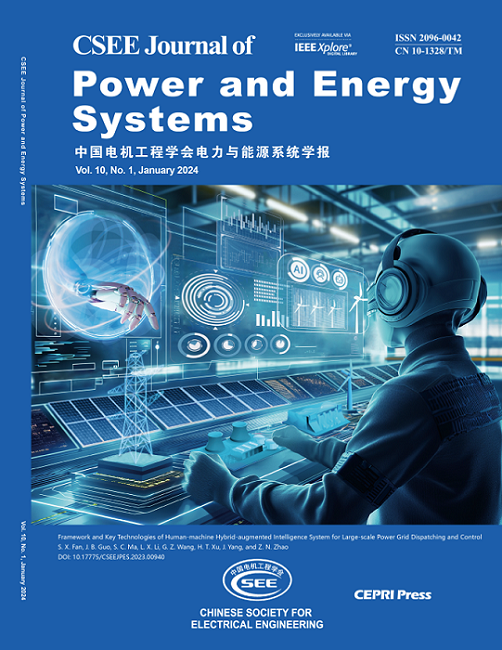Digital Twin-Supported Battery State Estimation Based on TCN-LSTM Neural Networks and Transfer Learning
IF 5.9
2区 工程技术
Q2 ENERGY & FUELS
引用次数: 0
Abstract
Estimating battery states such as State of Charge (SOC) and State of Health (SOH) is an essential component in developing energy storage technologies, which require accurate estimation of complex and nonlinear systems. A significant challenge is extracting pertinent spatial and temporal features from original battery data, which is crucial for efficient battery management systems. The emergence of digital twin (DT) technology offers a novel opportunity for performance monitoring and management of lithium-ion batteries, enhancing collaborative capacity among different battery state estimation techniques and enabling optimal operation of battery storage units. In this study, we propose a DT-supported battery state estimation method, in collaboration with the temporal convolutional network (TCN) and the long short-term memory (LSTM), to address the challenge of feature extraction. Firstly, we introduce a 4-layer hierarchical DT to overcome computational and data storage limitations in conventional battery management systems. Secondly, we present an online algorithm, TCN-LSTM for battery state estimation. Compared to conventional methods, TCN-LSTM outperforms other cyclic networks in various sequence modelling tasks and exhibits reduced reliance on the initial state conditions of the battery. Our methodology employs transfer learning to dynamically adjust the neural network parameters based on fresh data, ensuring real-time updating and enhancing the DT's accuracy. Focusing on SOC, SOH and Remaining Useful Life (RUL) estimation, our model demonstrates exceptional results. When testing with 90 cycle data, the average root mean square error (RMSE) values for SOC, SOH, and RUL are 1.1 %, 0.8%, and 0.9 % respectively, significantly outperforming traditional CNN's 2.2%, 2.0% and 3.6% and others. These results un-equivocally demonstrate the contribution of the DT model to battery management, highlighting the outstanding robustness of our proposed method, showcasing consistent performance across various conditions and superior adaptability compared to other models.基于TCN-LSTM神经网络和迁移学习的数字双支持电池状态估计
电池状态(SOC)和健康状态(SOH)的估计是开发储能技术的重要组成部分,这需要对复杂的非线性系统进行准确的估计。一个重要的挑战是从原始电池数据中提取相关的时空特征,这对有效的电池管理系统至关重要。数字孪生(DT)技术的出现为锂离子电池的性能监测和管理提供了新的机会,增强了不同电池状态估计技术之间的协作能力,并实现了电池存储单元的最佳运行。在这项研究中,我们提出了一种支持dt的电池状态估计方法,与时间卷积网络(TCN)和长短期记忆(LSTM)合作,以解决特征提取的挑战。首先,我们引入了一个4层分层DT来克服传统电池管理系统在计算和数据存储方面的限制。其次,我们提出了一种用于电池状态估计的在线算法TCN-LSTM。与传统方法相比,TCN-LSTM在各种序列建模任务中优于其他循环网络,并且减少了对电池初始状态条件的依赖。我们的方法采用迁移学习,根据新数据动态调整神经网络参数,确保实时更新,提高DT的准确性。通过对SOC、SOH和剩余使用寿命(RUL)的估计,我们的模型显示了卓越的结果。在使用90个周期数据进行测试时,SOC、SOH和RUL的平均均方根误差(RMSE)值分别为1.1%、0.8%和0.9%,显著优于传统CNN的2.2%、2.0%和3.6%等。这些结果明确地证明了DT模型对电池管理的贡献,突出了我们提出的方法的出色鲁棒性,与其他模型相比,在各种条件下表现出一致的性能和优越的适应性。
本文章由计算机程序翻译,如有差异,请以英文原文为准。
求助全文
约1分钟内获得全文
求助全文
来源期刊

CSEE Journal of Power and Energy Systems
Energy-Energy (all)
CiteScore
11.80
自引率
12.70%
发文量
389
审稿时长
26 weeks
期刊介绍:
The CSEE Journal of Power and Energy Systems (JPES) is an international bimonthly journal published by the Chinese Society for Electrical Engineering (CSEE) in collaboration with CEPRI (China Electric Power Research Institute) and IEEE (The Institute of Electrical and Electronics Engineers) Inc. Indexed by SCI, Scopus, INSPEC, CSAD (Chinese Science Abstracts Database), DOAJ, and ProQuest, it serves as a platform for reporting cutting-edge theories, methods, technologies, and applications shaping the development of power systems in energy transition. The journal offers authors an international platform to enhance the reach and impact of their contributions.
 求助内容:
求助内容: 应助结果提醒方式:
应助结果提醒方式:


